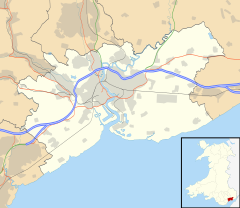Llanwern
| Llanwern | |
|---|---|
| Llanwern shown within Newport | |
| Population | 2,961 (2011 census) |
| OS grid reference | ST368863 |
| Principal area | |
| Country | Wales |
| Sovereign state | United Kingdom |
| Post town | NEWPORT |
| Postcode district | NP18 2 |
| Postcode district | NP26 3 |
| Dialling code | 01633 Maindee exchange Llanwern exchange |
| Police | Gwent |
| Fire | South Wales |
| Ambulance | Welsh |
| EU Parliament | Wales |
| UK Parliament | |
Llanwern is an electoral ward and community in the eastern urban-rural fringe of the City of Newport, South East Wales. Llanwern ward is bounded by the M4 and Langstone to the north, Ringland, Liswerry and the River Usk to the west, the River Severn to the south and the city boundary to the east. The ward includes Bishton, Goldcliff, Whitson and Redwick, as well as the community of Llanwern (population 333), which contains Llanwern village and the western half of the site of Llanwern steelworks. The area is governed by the Newport City Council.
Llanwern House was the home of Lord Rhondda of Llanwern, David Alfred Thomas, who was Minister of Food during the First World War.
In 1887, a year before his election to Parliament, Thomas took the lease of the house, where he lived the life of a somewhat unconventional country squire, riding to hounds and breeding prize Hereford cattle. He bought the house in 1900 and acquired the neighbouring Pencoed estate shortly before his death, the purchase making Thomas the largest landowner in Monmouthshire after Lord Tredegar.
Despite his fortune Thomas was quite content to retain the mansion at Llanwern, a large square house on a hilltop overlooking the village. The house, dating to 1760, was old-fashioned in its appearance but that appearance concealed a delicate and beautiful interior reflecting Chinese influence.
...
Wikipedia

